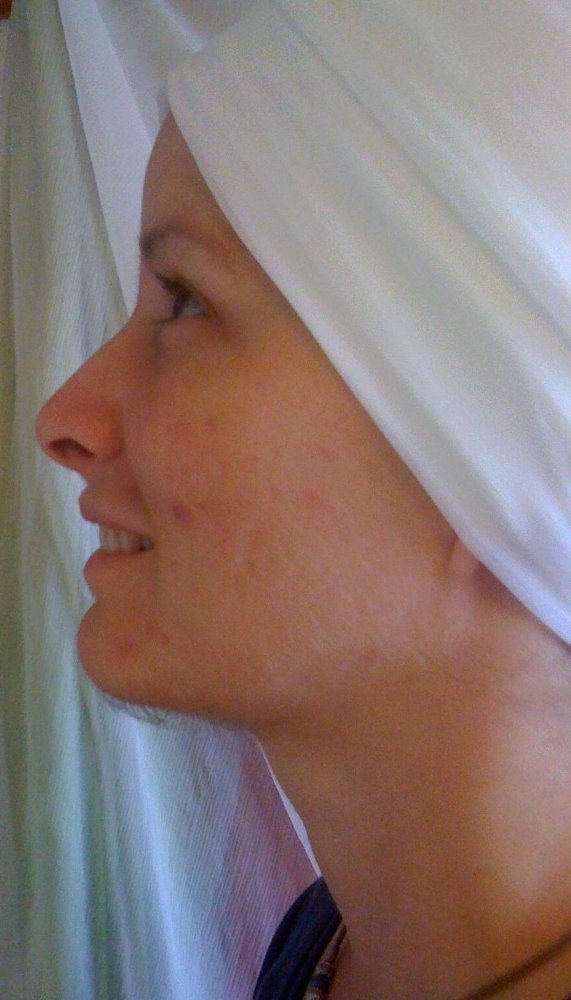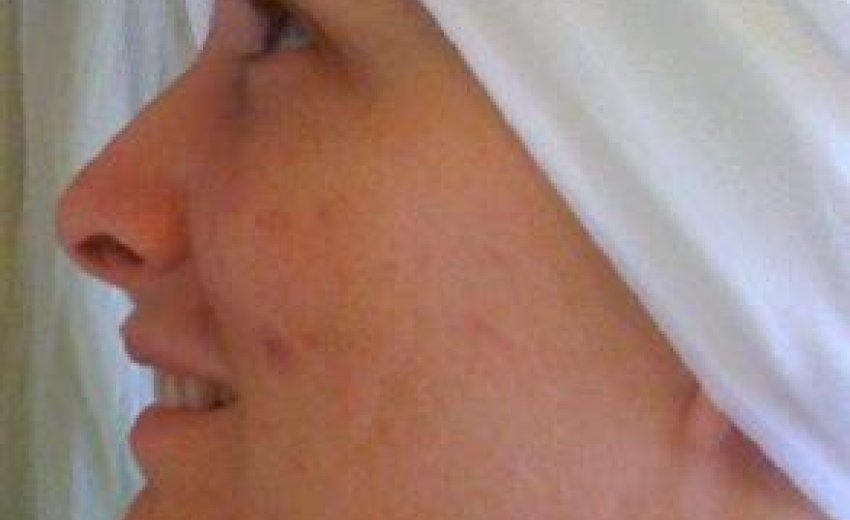 It was about this time last year that I was impelled to share a very difficult, uniquely Sikh challenge for me. I am a woman with a very fuzzy chin. It’s not an exaggeration at all to say I have a beard. Since my hair is dark brown, I can’t even pretend people don’t notice it, even if that’s what they like to pretend.
It was about this time last year that I was impelled to share a very difficult, uniquely Sikh challenge for me. I am a woman with a very fuzzy chin. It’s not an exaggeration at all to say I have a beard. Since my hair is dark brown, I can’t even pretend people don’t notice it, even if that’s what they like to pretend.
Last year, on May first, I offered my head to the Guru fully knowing that was the end of hiding this reality of my face and I knew that it was crucial that I do it. At the time, I had no idea how deep the quest to understand my Sikh image would lead.
About a month before Amrit, I met with a Sikh brother to ask questions and he was the first person who had the kindness and courage to bring up the issue. I had started allowing some of the hairs to grow on my chin, but would periodically freak out and yank out half of them, all the while begging the Guru to free me from this challenge. Consequently, my skin would revolt angrily with inflammation. I couldn’t win. I could not bring myself to permanently remove the hair with something like electrolysis. It felt like giving in. Well, my brother in all sensitivity told me it was absolutely ok to remove it, that our spiritual teacher, the Siri Singh Sahib, had said it was permissible but that ultimately, I needed to be graceful. If it was keeping me from walking through life gracefully, then I should remove it. Everything in me said it was a cop out. It was cheating; that I was supposed to face this conundrum. I was going to be a woman with a beard. Still, I was given an out and I took it. I went home and removed every last hair. I looked in the mirror relieved, thinking I was beautiful again. For the next three days, I couldn’t sleep.
The last time I wrote, the story left off after an interaction with a child helped me see this hair not as blight, but as a gift. I was nowhere near accepting it then, but I was beginning to understand that the hair was not as big an issue as I was making it out to be. Yet, at the same time, it was extremely important to understand that it was forcing me to see who I really am. So, I kept up. I didn’t touch the hair all year. I pulled at it and cursed it and tried to ignore it or make it seem less noticeable but there was really no escape. I always found myself with my forehead on the floor because trusting the Guru was the only way to cope. For nine months, every six weeks I had to move to a new area and work with a new group of people as I went through my medical rotations. That meant every six weeks I was introduced to a whole new sea of faces with the same thoughts behind their eyes. Finally, I was able to settle on an island in Washington for twelve weeks. It was the children I met there that helped me.
Children, in their innocence and curiosity will say things that most adults would need a lot of courage to say. Because they have so little in the way of preconceived notions, they tend to be more accepting of people, just as they are, and simply want to understand them. I started the new year in Family Medicine at a military base and my little patients began confronting me. I will never forget the face of this seven year old as she sat at eye level with me on the exam table. I had come in with the doctor who was my preceptor, a wonderful teacher who was still quite uncomfortable with me. Every time we sat together she unconsciously rubbed her chin. The child looked at me incredulously in my turban and bana and, after I started talking, said without breaking for breath, “You have a beard! I thought you were a boy. You’re a girl! Why do you have that? That’s weird! What are you anyway? Why are you wearing that thing on your head? What is it?” Her poor mother was horrified and her pre-teen brother looked away in embarrassment. All I could do was to immediately laugh. Her words were so true and honest and made me realize I had nothing to hide. I was actually very comfortable with my appearance and who I was discovering myself to be. I saw lots of little patients over the course of three months. The kids helped the adults be more comfortable and that continued to strengthen me. They helped me to realize I believed very much in who I was presenting myself to be: intact in my Creator’s form, a Khalsa woman. Me.
As Spring drew near, I felt more and more drawn to be with the Sikh Sangat in Espanola, New Mexico, the center of Sikh Dharma in the West. I had never visited there and the thought of doing so made me nervous. It was really Sikhs of Western heritage, students of the Siri Singh Sahib who made me most self-conscious about my facial hair because so many whom I had met after the initial discussion with my brother had told me I should or could remove it. I knew others were uncomfortable with me because of it too. I had not spent that much time in the Sangat and was afraid to face that confrontation on such a broad scale. I made my plans to travel to Espanola, and as the time drew near, the challenges to my form increased.
In preparation, I started regularly reading lectures Yogi Bhajan had given at Khalsa Women’s Camps. I hoped to gain some peace of mind. Instead, every time I read, I would end up in a lecture where there was a comment about it being ridiculous for a woman to have a beard. First I started freaking out, doubting my decision again. Then I started swearing at my teacher for confusing me. This was so cruel! After the fourth time I sat down to read yet another comment he had made about women and facial hair I just started laughing. He was pushing my buttons! I knew just what I was doing.
About the same time, I had to return for a week at school. Most of my classmates had not seen me regularly in bana and with all my hair. We had all been traveling during the year and it was time to renew our relationships. It was uncomfortable. During the week we had a lecture about professional job interviews from an experienced interviewer, a Dean at my University. I sat dressed in white in the front row as she told us we need to avoid standing out too much and should wear dark conservative suits and have neatly trimmed hair. One of the guys in the back asked about interviewing with his beard. She replied that she did not see a neat beard as a problem, as long as it wasn’t long like “Osama bin Laden” and of course she said, she wasn’t talking about women. She was trying to be funny. I felt my whole class collectively, silently gasp. They knew why I was doing what I was doing, and after that lecture, some of them started again to relate to me.
Two weeks before I left for Espanola, almost a year to the day of my conversation prior to Amrit, my brother took me to breakfast for what turned into a nearly identical conversation. This time the feeling was completely different. This time I had no doubt. When confronted about the hair, I looked him in the eye and said “I am just doing what I always knew I had to do.” “Which is?” he said. “Keeping it.” Then he very compassionately told me it would be difficult for most men to accept me. I agreed that my beard is an obstacle. In my mind though, I knew it was only a very special man that could get through—a Singh who could see past the physical to the Infinite. That is the kind of man for me.
All the anxiety of being with the Espanola Sangat was needless. It felt like returning home. Most of the people I met were so secure in themselves; I could sense no challenge whatsoever to my image. After a year of traveling all over, and facing challenges to my commitment and my Sikhi, I was blessed to return to that very familiar place, closer to self and community. Every night I can take off my turban but my face never lets me forget I am my Guru’s Sikh. It gives me solidity. At the same time, it has made me realize where true beauty is and how fleeting and transient this physical body is.
This is not the face I had when I was a kid and it will not be the one I have if I am blessed to live to 70. Yes, I am a woman, but that means so many different things. What is important is not how I fit into somebody else’s categorical image, but how much I can accept all of my own contradictions, duality and idiosyncrasies. The stronger I am in myself, the more others around me are convinced they are also pretty great. We are always changing, hopefully growing and expanding our sense of Infinity. All I have to do is touch my chin to remind me. What a gift!
On the last morning of my stay, I climbed to the top of the hill overlooking the Gurdwara and the expanse of rolling high desert land extending in every direction. A lone, sleek, black raven came to perch on the ground on the adjoining hillside and turned his eye to assess me. This grand bird is in Native American lore a representation of clarity, wisdom and healing; a connection between the physical plane and the ethers. I honored its presence in that sacred land as an image of the Infinite, bowing my tearful, smiling and fuzzy face to the Guru who guided me there by His grace.
The test of the hair has been one of courage, but more so a test of faith because really, there is nothing that can harm me or cause me to waiver from my destiny except my own self-defeat. The Creator’s plan is already in place. I just have to accept the journey, walk forward and learn what it means to me.
It is so much easier to smile in the face of a challenge than to cower and be weak; and the more often I do it, the easier it seems. In the end of this game there is no question of whether or not I shall be victorious. The victory is already won. In a few months I travel to Anandpur Sahib to recommit myself to this Khalsa path with greater understanding. The adventure continues, and I face it with my chin up, proudly and with joy in my heart.
Waheguru Ji ka Khalsa! Waheguru Ji ki Fateh!
